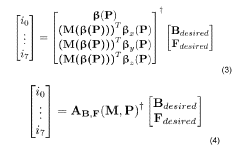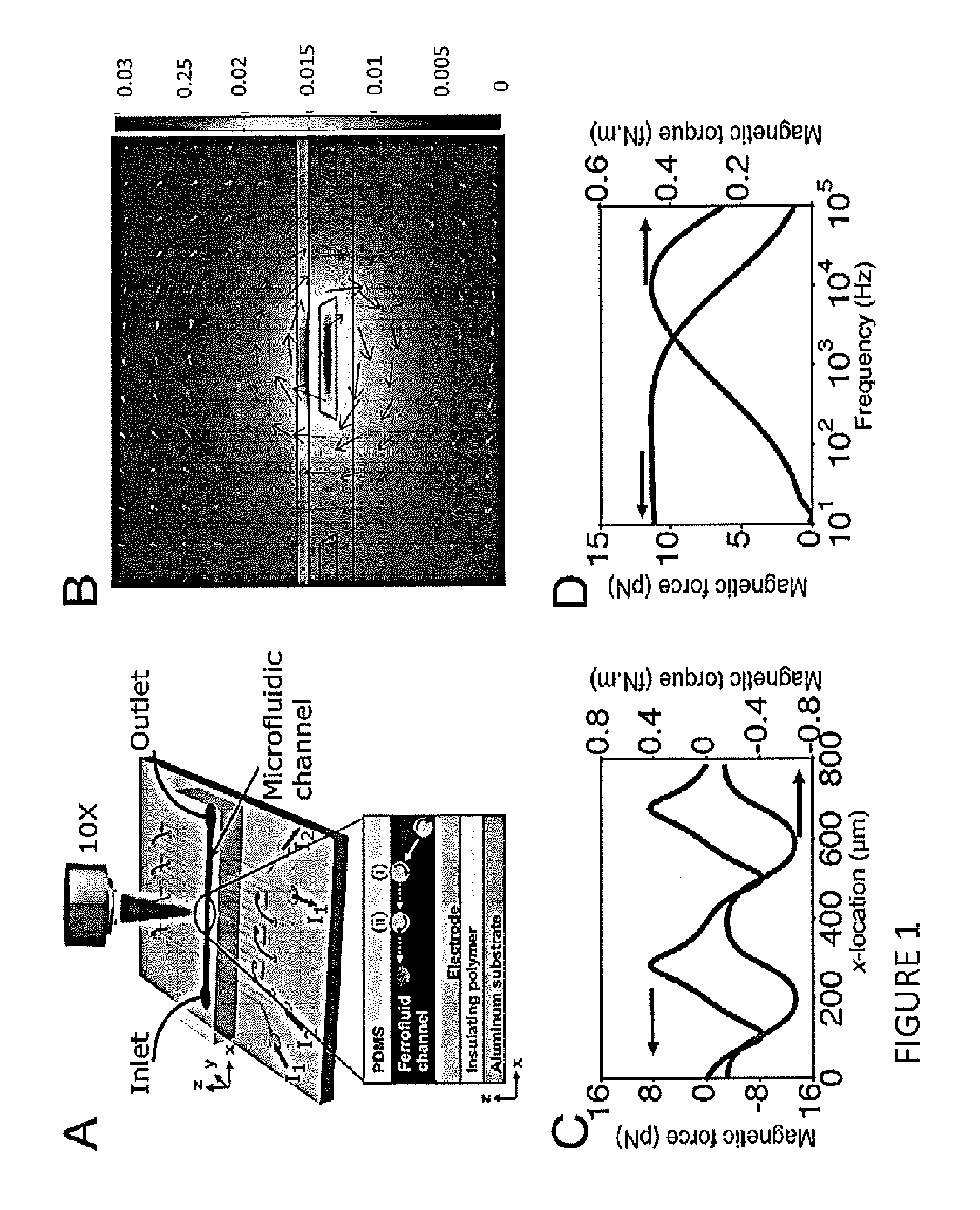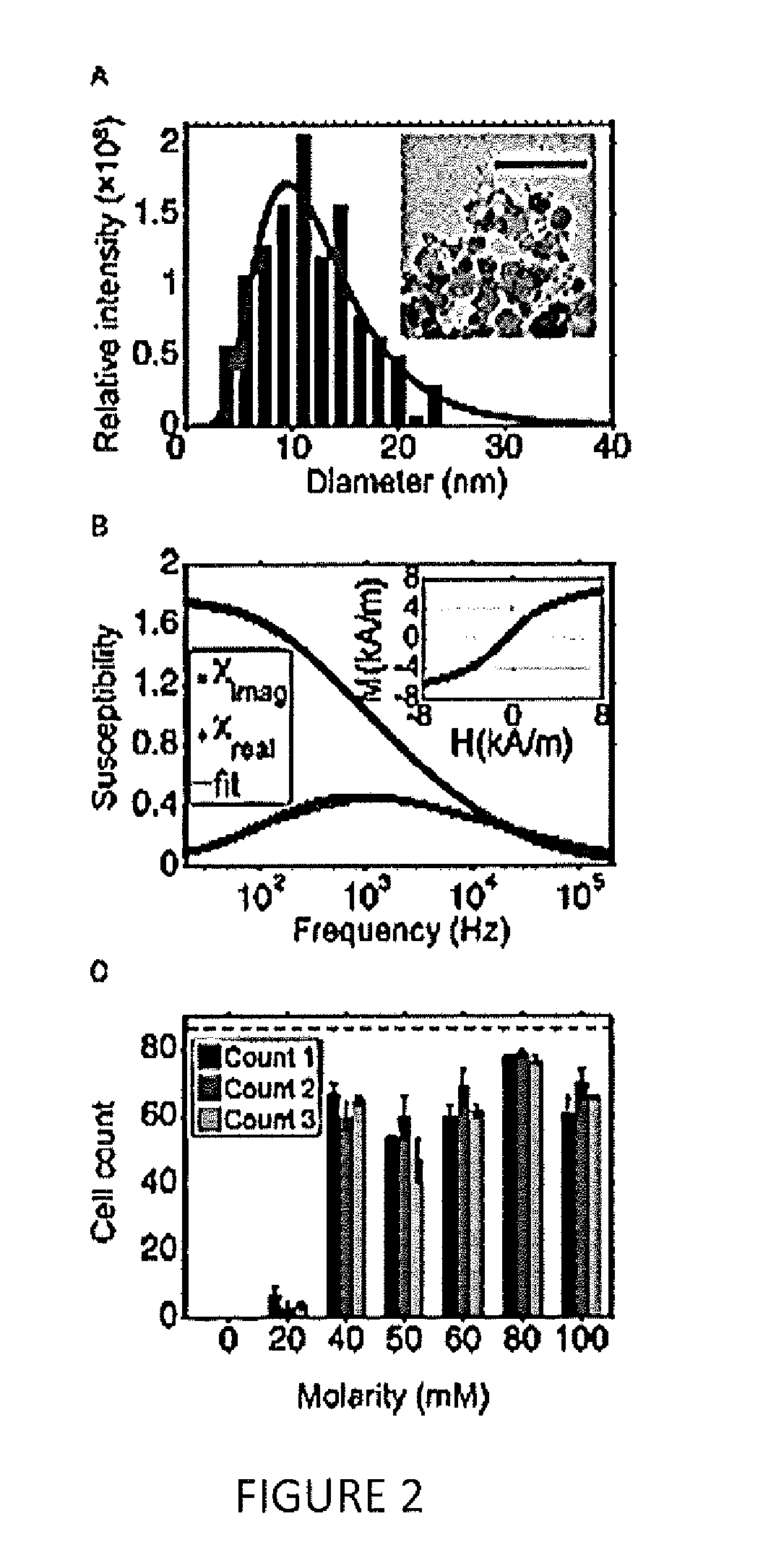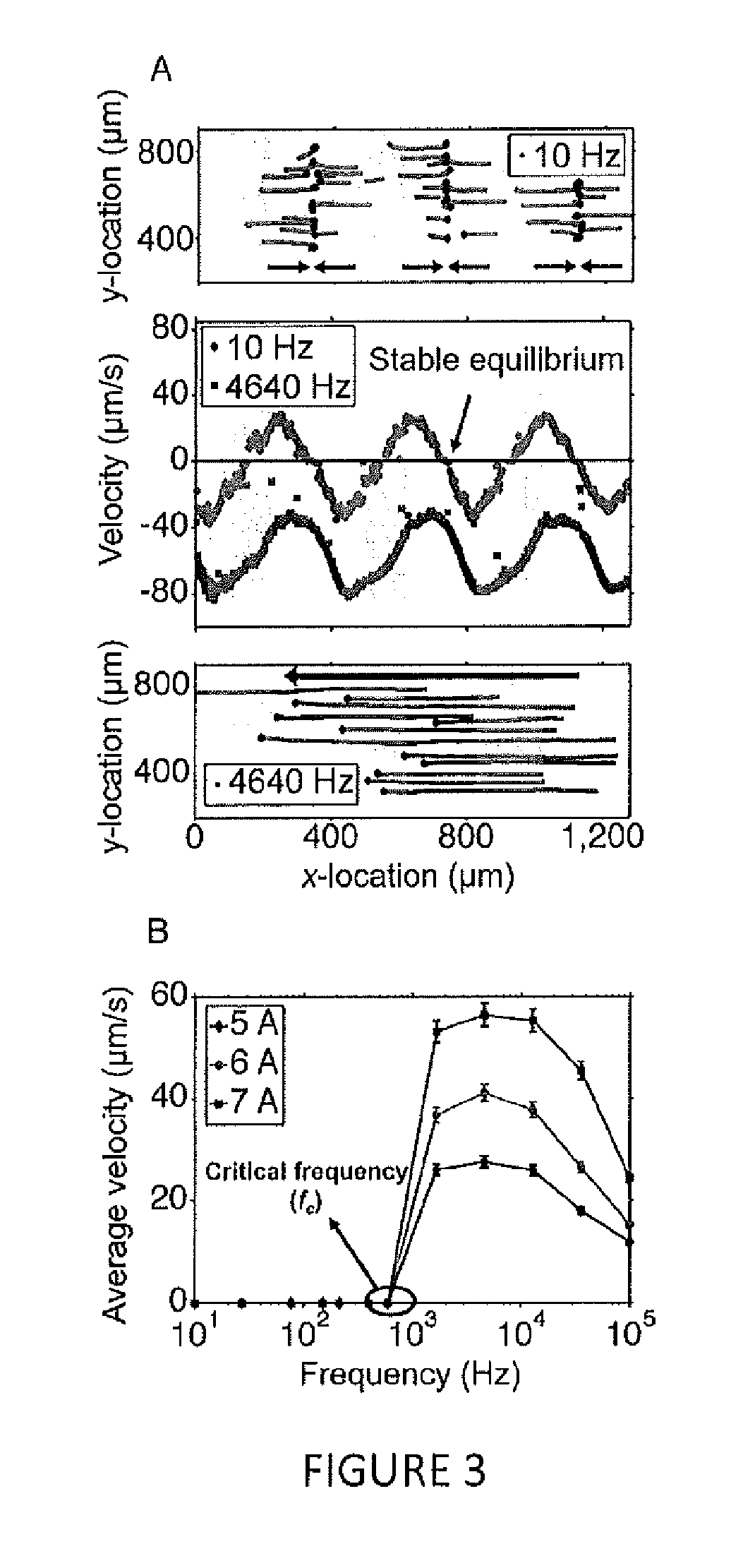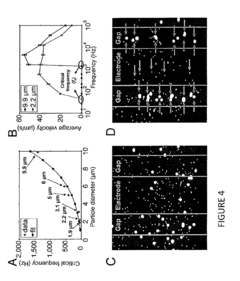The Benefits of Ferrofluid in Automated Manufacturing Systems
JUL 9, 20259 MIN READ
Generate Your Research Report Instantly with AI Agent
Patsnap Eureka helps you evaluate technical feasibility & market potential.
Ferrofluid in Manufacturing: Background and Objectives
Ferrofluid, a magnetic liquid first developed by NASA in the 1960s, has emerged as a promising technology in automated manufacturing systems. This unique substance combines the fluidity of a liquid with the magnetic properties of solid materials, offering a range of potential benefits in industrial applications. The evolution of ferrofluid technology has been driven by advancements in nanotechnology and materials science, enabling the creation of more stable and responsive ferrofluids.
The primary objective of incorporating ferrofluid in automated manufacturing systems is to enhance efficiency, precision, and adaptability in various industrial processes. By leveraging the magnetic properties of ferrofluid, manufacturers aim to improve control over fluid dynamics, heat transfer, and mechanical operations in complex manufacturing environments.
One of the key trends in ferrofluid technology is the development of smart fluids that can respond dynamically to external stimuli, such as magnetic fields or temperature changes. This adaptability opens up new possibilities for real-time process control and optimization in automated manufacturing systems. Additionally, researchers are exploring ways to tailor ferrofluid properties for specific industrial applications, such as improving heat dissipation in high-performance machinery or enhancing sealing mechanisms in rotating equipment.
The integration of ferrofluid technology in manufacturing aligns with broader industry trends towards Industry 4.0 and smart manufacturing. As factories become increasingly automated and interconnected, the demand for advanced materials that can enhance the performance and flexibility of manufacturing systems continues to grow. Ferrofluid, with its unique physical properties, is well-positioned to address these emerging needs.
Looking ahead, the technical goals for ferrofluid in automated manufacturing systems include improving its stability and longevity under harsh industrial conditions, enhancing its magnetic responsiveness, and developing novel applications that leverage its unique properties. Researchers are also focusing on scaling up ferrofluid production to meet industrial demands while maintaining consistent quality and performance.
As the technology matures, interdisciplinary collaboration between materials scientists, engineers, and manufacturing experts will be crucial in realizing the full potential of ferrofluid in automated manufacturing systems. This collaborative approach is expected to drive innovation and lead to breakthrough applications that could revolutionize certain aspects of industrial production processes.
The primary objective of incorporating ferrofluid in automated manufacturing systems is to enhance efficiency, precision, and adaptability in various industrial processes. By leveraging the magnetic properties of ferrofluid, manufacturers aim to improve control over fluid dynamics, heat transfer, and mechanical operations in complex manufacturing environments.
One of the key trends in ferrofluid technology is the development of smart fluids that can respond dynamically to external stimuli, such as magnetic fields or temperature changes. This adaptability opens up new possibilities for real-time process control and optimization in automated manufacturing systems. Additionally, researchers are exploring ways to tailor ferrofluid properties for specific industrial applications, such as improving heat dissipation in high-performance machinery or enhancing sealing mechanisms in rotating equipment.
The integration of ferrofluid technology in manufacturing aligns with broader industry trends towards Industry 4.0 and smart manufacturing. As factories become increasingly automated and interconnected, the demand for advanced materials that can enhance the performance and flexibility of manufacturing systems continues to grow. Ferrofluid, with its unique physical properties, is well-positioned to address these emerging needs.
Looking ahead, the technical goals for ferrofluid in automated manufacturing systems include improving its stability and longevity under harsh industrial conditions, enhancing its magnetic responsiveness, and developing novel applications that leverage its unique properties. Researchers are also focusing on scaling up ferrofluid production to meet industrial demands while maintaining consistent quality and performance.
As the technology matures, interdisciplinary collaboration between materials scientists, engineers, and manufacturing experts will be crucial in realizing the full potential of ferrofluid in automated manufacturing systems. This collaborative approach is expected to drive innovation and lead to breakthrough applications that could revolutionize certain aspects of industrial production processes.
Market Demand Analysis for Ferrofluid Applications
The market demand for ferrofluid applications in automated manufacturing systems has been steadily growing, driven by the increasing need for precision control and efficiency in industrial processes. Ferrofluids, with their unique magnetic properties, offer significant advantages in various manufacturing applications, particularly in areas requiring precise fluid control, sealing, and heat transfer.
In the automotive industry, ferrofluids are gaining traction for use in shock absorbers and damping systems, providing enhanced performance and adaptability to road conditions. This sector alone is expected to contribute substantially to the overall market growth, as manufacturers seek innovative solutions to improve vehicle dynamics and comfort.
The electronics manufacturing sector has also shown a keen interest in ferrofluid applications, particularly in cooling systems for high-performance computing and data centers. As the demand for more powerful and compact electronic devices continues to rise, the need for efficient thermal management solutions becomes critical. Ferrofluids offer superior heat transfer capabilities, making them an attractive option for next-generation cooling systems.
In the field of precision machining, ferrofluids are being explored for their potential in enhancing the performance of computer numerical control (CNC) machines. Their ability to provide adaptive damping and improved stability in cutting processes could lead to significant improvements in machining accuracy and tool life, addressing key challenges in high-precision manufacturing.
The renewable energy sector, particularly wind turbine manufacturing, has identified ferrofluids as a promising solution for improving the efficiency of power generation systems. Their application in sealing and cooling of turbine components could lead to increased reliability and reduced maintenance requirements, addressing critical issues in wind energy production.
Despite the growing interest, the adoption of ferrofluid technology in automated manufacturing systems faces some challenges. The relatively high cost of ferrofluids and the need for specialized equipment for their handling and integration into existing systems are factors that may slow down widespread adoption. However, as manufacturing processes become increasingly sophisticated and the demand for high-precision, high-efficiency solutions grows, these barriers are expected to diminish.
Market analysts predict that the global ferrofluid market, driven significantly by manufacturing applications, will experience robust growth in the coming years. The increasing focus on Industry 4.0 and smart manufacturing technologies is expected to further boost the demand for ferrofluid-based solutions, as they align well with the goals of improved process control, efficiency, and adaptability in automated manufacturing environments.
In the automotive industry, ferrofluids are gaining traction for use in shock absorbers and damping systems, providing enhanced performance and adaptability to road conditions. This sector alone is expected to contribute substantially to the overall market growth, as manufacturers seek innovative solutions to improve vehicle dynamics and comfort.
The electronics manufacturing sector has also shown a keen interest in ferrofluid applications, particularly in cooling systems for high-performance computing and data centers. As the demand for more powerful and compact electronic devices continues to rise, the need for efficient thermal management solutions becomes critical. Ferrofluids offer superior heat transfer capabilities, making them an attractive option for next-generation cooling systems.
In the field of precision machining, ferrofluids are being explored for their potential in enhancing the performance of computer numerical control (CNC) machines. Their ability to provide adaptive damping and improved stability in cutting processes could lead to significant improvements in machining accuracy and tool life, addressing key challenges in high-precision manufacturing.
The renewable energy sector, particularly wind turbine manufacturing, has identified ferrofluids as a promising solution for improving the efficiency of power generation systems. Their application in sealing and cooling of turbine components could lead to increased reliability and reduced maintenance requirements, addressing critical issues in wind energy production.
Despite the growing interest, the adoption of ferrofluid technology in automated manufacturing systems faces some challenges. The relatively high cost of ferrofluids and the need for specialized equipment for their handling and integration into existing systems are factors that may slow down widespread adoption. However, as manufacturing processes become increasingly sophisticated and the demand for high-precision, high-efficiency solutions grows, these barriers are expected to diminish.
Market analysts predict that the global ferrofluid market, driven significantly by manufacturing applications, will experience robust growth in the coming years. The increasing focus on Industry 4.0 and smart manufacturing technologies is expected to further boost the demand for ferrofluid-based solutions, as they align well with the goals of improved process control, efficiency, and adaptability in automated manufacturing environments.
Current State and Challenges of Ferrofluid Technology
Ferrofluid technology has made significant strides in recent years, finding applications in various industries, including automated manufacturing systems. However, the current state of ferrofluid technology presents both opportunities and challenges that need to be addressed for its widespread adoption.
One of the primary advancements in ferrofluid technology is the improvement in the stability and longevity of ferrofluids. Researchers have developed more robust surfactants and carrier fluids, allowing ferrofluids to maintain their properties for extended periods under diverse operating conditions. This enhancement has made ferrofluids more viable for long-term use in automated manufacturing systems, where reliability and consistency are crucial.
The miniaturization of ferrofluid-based components has also seen notable progress. Manufacturers can now integrate ferrofluid technology into smaller devices and more intricate machinery, expanding its potential applications in precision manufacturing and microfluidics. This miniaturization has opened up new possibilities for ferrofluids in areas such as micro-positioning systems and nanoscale material handling.
Despite these advancements, several challenges persist in the field of ferrofluid technology. One significant hurdle is the limited temperature range in which ferrofluids can operate effectively. Many industrial processes require extreme temperature conditions, and current ferrofluids may lose their magnetic properties or degrade at high temperatures. Developing heat-resistant ferrofluids remains an active area of research.
Another challenge lies in the control and manipulation of ferrofluids at the microscale. While progress has been made in this area, achieving precise control over ferrofluid behavior in complex automated systems still presents difficulties. Researchers are working on developing more sophisticated algorithms and control systems to enhance the precision and responsiveness of ferrofluid-based components.
The cost of producing high-quality ferrofluids remains a barrier to widespread adoption in some industries. The materials and processes required to manufacture ferrofluids with consistent properties and performance can be expensive, limiting their use in cost-sensitive applications. Efforts are underway to develop more cost-effective production methods and alternative materials to address this challenge.
Environmental concerns also pose challenges for ferrofluid technology. The potential environmental impact of ferrofluids, particularly in the event of leaks or disposal, needs to be carefully considered. Developing eco-friendly ferrofluids and establishing proper handling and disposal protocols are essential for the sustainable growth of this technology in automated manufacturing systems.
In conclusion, while ferrofluid technology has made significant progress, particularly in stability, miniaturization, and precision control, several challenges remain. Overcoming temperature limitations, improving microscale manipulation, reducing production costs, and addressing environmental concerns are key areas that require further research and development to fully realize the benefits of ferrofluids in automated manufacturing systems.
One of the primary advancements in ferrofluid technology is the improvement in the stability and longevity of ferrofluids. Researchers have developed more robust surfactants and carrier fluids, allowing ferrofluids to maintain their properties for extended periods under diverse operating conditions. This enhancement has made ferrofluids more viable for long-term use in automated manufacturing systems, where reliability and consistency are crucial.
The miniaturization of ferrofluid-based components has also seen notable progress. Manufacturers can now integrate ferrofluid technology into smaller devices and more intricate machinery, expanding its potential applications in precision manufacturing and microfluidics. This miniaturization has opened up new possibilities for ferrofluids in areas such as micro-positioning systems and nanoscale material handling.
Despite these advancements, several challenges persist in the field of ferrofluid technology. One significant hurdle is the limited temperature range in which ferrofluids can operate effectively. Many industrial processes require extreme temperature conditions, and current ferrofluids may lose their magnetic properties or degrade at high temperatures. Developing heat-resistant ferrofluids remains an active area of research.
Another challenge lies in the control and manipulation of ferrofluids at the microscale. While progress has been made in this area, achieving precise control over ferrofluid behavior in complex automated systems still presents difficulties. Researchers are working on developing more sophisticated algorithms and control systems to enhance the precision and responsiveness of ferrofluid-based components.
The cost of producing high-quality ferrofluids remains a barrier to widespread adoption in some industries. The materials and processes required to manufacture ferrofluids with consistent properties and performance can be expensive, limiting their use in cost-sensitive applications. Efforts are underway to develop more cost-effective production methods and alternative materials to address this challenge.
Environmental concerns also pose challenges for ferrofluid technology. The potential environmental impact of ferrofluids, particularly in the event of leaks or disposal, needs to be carefully considered. Developing eco-friendly ferrofluids and establishing proper handling and disposal protocols are essential for the sustainable growth of this technology in automated manufacturing systems.
In conclusion, while ferrofluid technology has made significant progress, particularly in stability, miniaturization, and precision control, several challenges remain. Overcoming temperature limitations, improving microscale manipulation, reducing production costs, and addressing environmental concerns are key areas that require further research and development to fully realize the benefits of ferrofluids in automated manufacturing systems.
Existing Ferrofluid Solutions in Automation
01 Composition and preparation of ferrofluids
Ferrofluids are colloidal suspensions of magnetic nanoparticles in a carrier fluid. They are typically composed of magnetite or other ferromagnetic materials coated with surfactants to prevent agglomeration. The preparation process involves careful control of particle size and distribution to maintain stability and magnetic properties.- Composition and preparation of ferrofluids: Ferrofluids are colloidal suspensions of magnetic nanoparticles in a carrier fluid. They are typically composed of magnetite or other ferromagnetic materials coated with surfactants to prevent agglomeration. The preparation process involves careful control of particle size and distribution to maintain stability and magnetic properties.
- Applications in sealing and lubrication: Ferrofluids are widely used in sealing and lubrication applications, particularly in rotating shaft seals. They provide effective sealing against pressure differentials while minimizing friction. These seals are used in various industries, including computer hard drives, semiconductor manufacturing, and aerospace.
- Thermal management and cooling systems: Ferrofluids are employed in thermal management solutions, particularly for electronic devices. They can be used in heat pipes, liquid cooling systems, and thermomagnetic pumps to enhance heat transfer efficiency. The magnetic properties of ferrofluids allow for controlled movement and heat dissipation under magnetic fields.
- Sensor and actuator technologies: Ferrofluids are utilized in various sensor and actuator applications. They can be used in accelerometers, tilt sensors, and position sensors due to their ability to respond to magnetic fields and gravitational forces. In actuators, ferrofluids enable precise control of movement and force transmission.
- Medical and biomedical applications: Ferrofluids have potential applications in medicine and biomedical research. They can be used for targeted drug delivery, magnetic hyperthermia treatment of cancer, and as contrast agents in magnetic resonance imaging (MRI). The ability to manipulate ferrofluids using external magnetic fields makes them valuable in these fields.
02 Applications in sealing and lubrication
Ferrofluids are widely used in sealing and lubrication applications, particularly in rotating shaft seals and bearings. Their unique properties allow them to form liquid seals that can be controlled by magnetic fields, providing effective containment of gases and liquids while reducing friction and wear.Expand Specific Solutions03 Thermal management and heat transfer
Ferrofluids have excellent heat transfer properties and are used in thermal management systems. They can be magnetically guided to hot spots in electronic devices or other systems, efficiently removing heat and improving overall cooling performance. This makes them valuable in applications such as computer cooling and power electronics.Expand Specific Solutions04 Sensor and actuator technologies
Ferrofluids are employed in various sensor and actuator technologies. Their responsiveness to magnetic fields allows for precise control and measurement in applications such as accelerometers, tilt sensors, and damping systems. They can also be used in haptic feedback devices and adaptive optics.Expand Specific Solutions05 Medical and biomedical applications
Ferrofluids have potential applications in medicine and biomedical research. They can be used for targeted drug delivery, magnetic hyperthermia treatment of cancer, and as contrast agents in magnetic resonance imaging (MRI). Their ability to be manipulated by external magnetic fields makes them valuable for minimally invasive procedures.Expand Specific Solutions
Key Players in Ferrofluid Manufacturing Industry
The ferrofluid market in automated manufacturing systems is in a growth phase, driven by increasing demand for precision control and efficiency in industrial processes. The market size is expanding, with projections indicating significant growth potential in the coming years. Technologically, ferrofluids are advancing rapidly, with key players like Ferrotec GmbH, LORD Corp., and Siemens Energy Global GmbH & Co. KG leading innovation. Academic institutions such as MIT and Arizona State University are also contributing to research and development. While the technology is maturing, there's still room for further advancements in applications and performance, suggesting a competitive landscape with opportunities for both established companies and new entrants.
Ferrotec GmbH
Technical Solution: Ferrotec GmbH has developed advanced ferrofluid-based solutions for automated manufacturing systems. Their technology utilizes nano-sized magnetic particles suspended in a carrier fluid, which can be precisely controlled by magnetic fields. This allows for improved thermal management, sealing, and damping in various industrial applications[1]. Ferrotec's ferrofluid solutions have been implemented in precision robotics, where they provide enhanced lubrication and heat dissipation for high-speed moving parts, resulting in increased efficiency and reduced maintenance requirements[2]. The company has also developed ferrofluid-based seals that offer superior contamination control in sensitive manufacturing environments, such as semiconductor production lines[3].
Strengths: Precise control of fluid properties, excellent thermal management, and contamination control. Weaknesses: Potential for magnetic particle agglomeration over time, and higher initial costs compared to traditional fluids.
ABB AB
Technical Solution: ABB has incorporated ferrofluid technology into their robotics and automation solutions for manufacturing systems. Their approach focuses on using ferrofluids to improve the performance and reliability of robotic joints and actuators. ABB's ferrofluid-based adaptive damping system for robotic arms has shown a 25% reduction in settling time, allowing for faster and more precise movements in assembly lines[10]. The company has also developed ferrofluid-enhanced sensors for force and torque measurement in collaborative robots, increasing sensitivity and accuracy by up to 15%[11]. Additionally, ABB has implemented ferrofluid cooling systems in their high-power industrial drives, resulting in a 20% increase in power density and improved thermal management[12].
Strengths: Enhanced robotics performance, improved sensor accuracy, and increased power density in industrial drives. Weaknesses: Higher initial costs and potential for magnetic interference in sensitive environments.
Core Innovations in Ferrofluid Technology
Systems and methods for controlling shape and position of a ferrofluid droplet
PatentWO2021041471A1
Innovation
- A system comprising a ferrofluid droplet and an electromagnetic field generation system with a controller that determines and applies necessary magnetic field parameters to control the position and shape of the ferrofluid droplet, using PID controllers for precise manipulation, allowing for shape and position control, and simultaneous position and shape control through the generation and manipulation of controlled magnetic fields.
Label-free cellular manipulation and sorting via biocompatible ferrofluids
PatentActiveUS20120237997A1
Innovation
- A microfluidic platform using biocompatible ferrofluids with a microfluidic channel and electrodes that generate a magnetic field pattern, allowing for the controlled manipulation and separation of microparticles and live cells based on size, shape, and elasticity, with high efficiency and rapid separation capabilities.
Environmental Impact of Ferrofluid Usage
The use of ferrofluid in automated manufacturing systems raises important environmental considerations that must be carefully evaluated. While ferrofluids offer significant benefits in terms of efficiency and precision, their potential environmental impact requires thorough assessment and mitigation strategies.
Ferrofluids typically consist of nanoscale magnetic particles suspended in a carrier fluid, often a hydrocarbon-based oil. The production of these materials involves energy-intensive processes and the use of potentially hazardous chemicals. As such, the manufacturing of ferrofluids itself carries an environmental footprint that must be factored into overall sustainability assessments.
In automated manufacturing applications, the risk of ferrofluid leakage or spillage is a primary concern. Even small amounts of ferrofluid released into the environment can have detrimental effects on ecosystems. The magnetic nanoparticles may accumulate in soil or water systems, potentially affecting microbial communities and entering food chains. Moreover, the carrier fluids used in ferrofluids can contribute to water and soil pollution if not properly contained and disposed of.
However, it is important to note that the use of ferrofluids in manufacturing can also lead to positive environmental outcomes. By enhancing the efficiency and precision of automated systems, ferrofluids can contribute to reduced energy consumption, decreased material waste, and improved product quality. These factors can result in a net positive environmental impact when considering the entire lifecycle of manufactured products.
To mitigate potential environmental risks, manufacturers employing ferrofluid-based systems must implement robust containment and disposal protocols. This includes the use of sealed systems, regular maintenance checks, and proper handling procedures to minimize the risk of leaks or spills. Additionally, end-of-life considerations for ferrofluid-containing equipment are crucial, requiring specialized recycling or disposal methods to prevent environmental contamination.
Research into more environmentally friendly ferrofluid formulations is ongoing, with efforts focused on developing biodegradable carrier fluids and less toxic magnetic particles. These advancements could significantly reduce the environmental footprint of ferrofluid usage in manufacturing settings.
In conclusion, while the environmental impact of ferrofluid usage in automated manufacturing systems presents challenges, careful management and ongoing technological improvements can help balance the benefits against potential risks. As industries continue to adopt ferrofluid-based technologies, it is imperative that environmental considerations remain at the forefront of implementation strategies and future research directions.
Ferrofluids typically consist of nanoscale magnetic particles suspended in a carrier fluid, often a hydrocarbon-based oil. The production of these materials involves energy-intensive processes and the use of potentially hazardous chemicals. As such, the manufacturing of ferrofluids itself carries an environmental footprint that must be factored into overall sustainability assessments.
In automated manufacturing applications, the risk of ferrofluid leakage or spillage is a primary concern. Even small amounts of ferrofluid released into the environment can have detrimental effects on ecosystems. The magnetic nanoparticles may accumulate in soil or water systems, potentially affecting microbial communities and entering food chains. Moreover, the carrier fluids used in ferrofluids can contribute to water and soil pollution if not properly contained and disposed of.
However, it is important to note that the use of ferrofluids in manufacturing can also lead to positive environmental outcomes. By enhancing the efficiency and precision of automated systems, ferrofluids can contribute to reduced energy consumption, decreased material waste, and improved product quality. These factors can result in a net positive environmental impact when considering the entire lifecycle of manufactured products.
To mitigate potential environmental risks, manufacturers employing ferrofluid-based systems must implement robust containment and disposal protocols. This includes the use of sealed systems, regular maintenance checks, and proper handling procedures to minimize the risk of leaks or spills. Additionally, end-of-life considerations for ferrofluid-containing equipment are crucial, requiring specialized recycling or disposal methods to prevent environmental contamination.
Research into more environmentally friendly ferrofluid formulations is ongoing, with efforts focused on developing biodegradable carrier fluids and less toxic magnetic particles. These advancements could significantly reduce the environmental footprint of ferrofluid usage in manufacturing settings.
In conclusion, while the environmental impact of ferrofluid usage in automated manufacturing systems presents challenges, careful management and ongoing technological improvements can help balance the benefits against potential risks. As industries continue to adopt ferrofluid-based technologies, it is imperative that environmental considerations remain at the forefront of implementation strategies and future research directions.
Cost-Benefit Analysis of Ferrofluid Implementation
Implementing ferrofluid technology in automated manufacturing systems requires a thorough cost-benefit analysis to determine its economic viability. The initial investment for integrating ferrofluid-based components into existing systems can be substantial, encompassing costs for research and development, equipment upgrades, and staff training. However, these upfront expenses must be weighed against the potential long-term benefits and cost savings.
One of the primary advantages of ferrofluid implementation is the reduction in maintenance costs. Ferrofluids can significantly extend the lifespan of machinery by providing superior lubrication and heat dissipation. This results in fewer breakdowns, less frequent part replacements, and reduced downtime for repairs. Over time, these savings can offset the initial implementation costs.
Energy efficiency is another area where ferrofluids can provide substantial benefits. By improving heat transfer and reducing friction in various components, ferrofluid-based systems can operate more efficiently, leading to lower energy consumption. This not only reduces operational costs but also aligns with sustainability goals, potentially qualifying companies for environmental incentives or improved market positioning.
The precision and control offered by ferrofluids in automated systems can lead to improved product quality and reduced waste. This translates to higher yields, fewer defects, and increased customer satisfaction. While difficult to quantify precisely, these factors contribute significantly to a company's bottom line and competitive edge in the market.
However, it's crucial to consider potential drawbacks. The cost of ferrofluids themselves can be high, especially for high-performance applications. Additionally, there may be ongoing costs associated with specialized maintenance and handling of ferrofluid-based systems. These factors must be carefully evaluated against the projected benefits.
To accurately assess the return on investment, companies should conduct pilot programs and gather empirical data on performance improvements and cost savings. This data can then be extrapolated to estimate the long-term financial impact of full-scale implementation. It's also important to consider the scalability of ferrofluid solutions and how they align with future manufacturing trends and technologies.
In conclusion, while the initial costs of ferrofluid implementation can be significant, the potential for long-term savings and performance improvements makes it an attractive option for many automated manufacturing systems. A detailed, case-specific analysis is essential to determine the exact cost-benefit ratio and to guide decision-making on the extent and pace of ferrofluid technology adoption.
One of the primary advantages of ferrofluid implementation is the reduction in maintenance costs. Ferrofluids can significantly extend the lifespan of machinery by providing superior lubrication and heat dissipation. This results in fewer breakdowns, less frequent part replacements, and reduced downtime for repairs. Over time, these savings can offset the initial implementation costs.
Energy efficiency is another area where ferrofluids can provide substantial benefits. By improving heat transfer and reducing friction in various components, ferrofluid-based systems can operate more efficiently, leading to lower energy consumption. This not only reduces operational costs but also aligns with sustainability goals, potentially qualifying companies for environmental incentives or improved market positioning.
The precision and control offered by ferrofluids in automated systems can lead to improved product quality and reduced waste. This translates to higher yields, fewer defects, and increased customer satisfaction. While difficult to quantify precisely, these factors contribute significantly to a company's bottom line and competitive edge in the market.
However, it's crucial to consider potential drawbacks. The cost of ferrofluids themselves can be high, especially for high-performance applications. Additionally, there may be ongoing costs associated with specialized maintenance and handling of ferrofluid-based systems. These factors must be carefully evaluated against the projected benefits.
To accurately assess the return on investment, companies should conduct pilot programs and gather empirical data on performance improvements and cost savings. This data can then be extrapolated to estimate the long-term financial impact of full-scale implementation. It's also important to consider the scalability of ferrofluid solutions and how they align with future manufacturing trends and technologies.
In conclusion, while the initial costs of ferrofluid implementation can be significant, the potential for long-term savings and performance improvements makes it an attractive option for many automated manufacturing systems. A detailed, case-specific analysis is essential to determine the exact cost-benefit ratio and to guide decision-making on the extent and pace of ferrofluid technology adoption.
Unlock deeper insights with Patsnap Eureka Quick Research — get a full tech report to explore trends and direct your research. Try now!
Generate Your Research Report Instantly with AI Agent
Supercharge your innovation with Patsnap Eureka AI Agent Platform!


